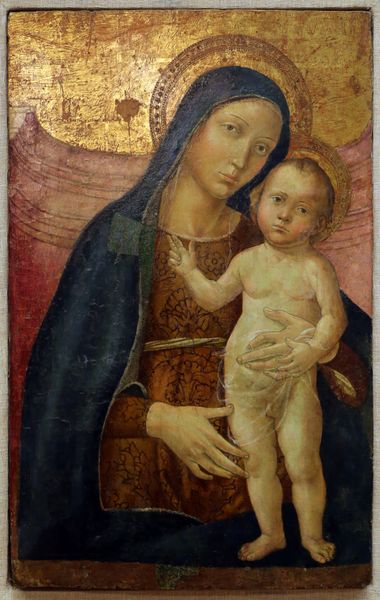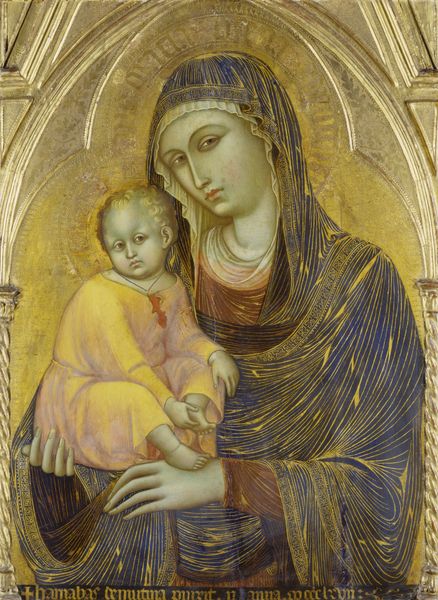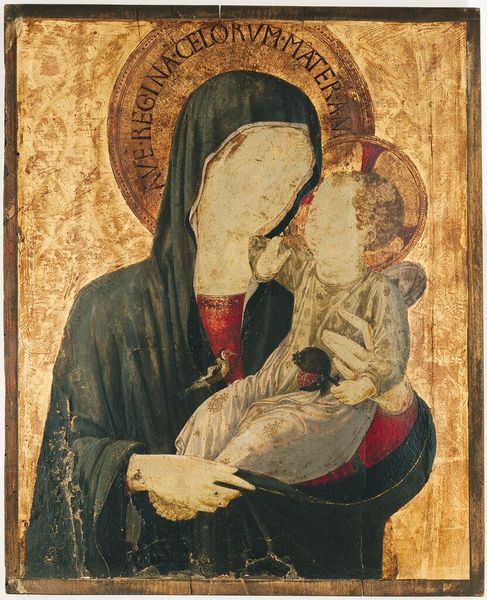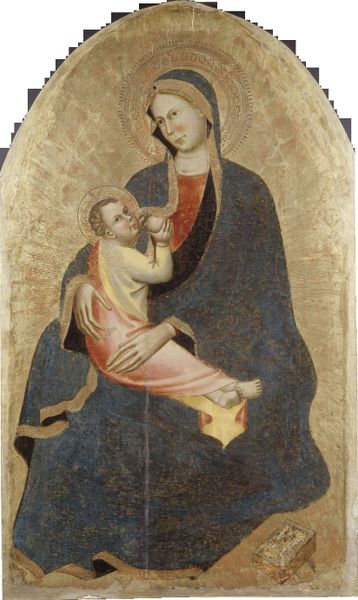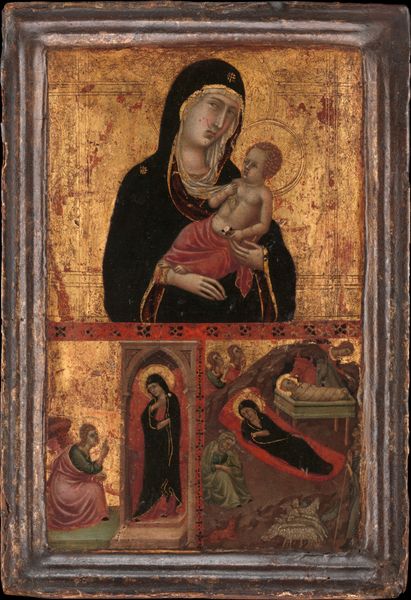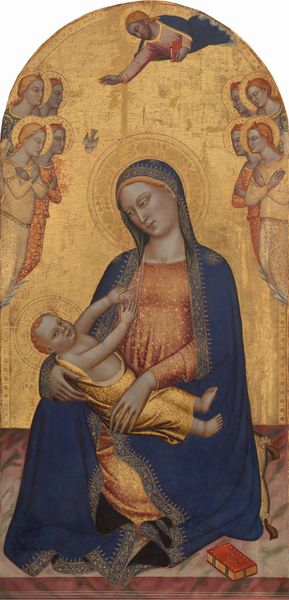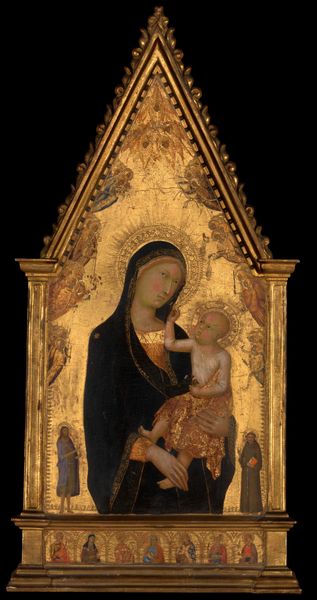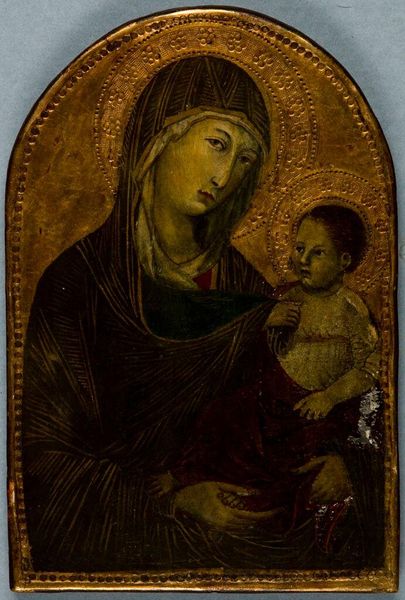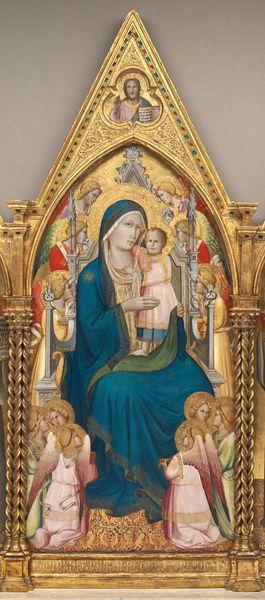
painting, oil-paint
#
portrait
#
painting
#
oil-paint
#
figuration
#
oil painting
#
italian-renaissance
Dimensions: height 53 cm, width 42 cm, depth 13.5 cm
Copyright: Rijks Museum: Open Domain
Curator: Welcome. We’re standing before Giovanni da Francia’s oil on panel painting, Madonna of Humility, estimated to have been created between 1429 and 1439 during the Italian Renaissance. Editor: There’s an ethereal quality to it that’s quite charming, isn't it? The colours, the softness, a bit like a comforting dream. It’s as if she's caught in a reflective mood. Curator: Indeed. Note how the composition places the Madonna not on a throne, but seated directly on the ground—an unconventional portrayal emphasizing humility. Her clothing is lavish, adorned with patterns. Semiotically speaking, the contrast with her seated position creates an interesting visual paradox. Editor: It’s a bit like, ‘I’m royalty, but I’m also one of you,’ or something. Her gentle expression invites you to come closer and maybe tell her your problems, even if I suspect the baby is about to burst into tears. I wonder if the artist intended to play with those two concepts at once? The divine and the completely human. Curator: That’s a perceptive observation. Consider how the surrounding gold leaf imbues the scene with an aura of divinity. Yet the soft, almost melancholic expression in her eyes and the very human gesture of the child do ground it. There’s also a striking attention to textural detail. Editor: It feels very humanising. It also does this crazy thing, where everything else fades away, you know? Like a secret whispered directly to you. And the gold leaf sort of heightens it... it almost blinds. I find myself wondering, was it this vivid back in the 15th century, or has it faded a little over the centuries? I love the flowers! Curator: Conservation and cleaning would have certainly had an effect on the original luminosity. But yes, the use of flowers creates another plane for textual interpretations... I perceive in this painting a balanced interplay between spiritual transcendence and earthy realism, skillfully rendered through formal structure. Editor: Exactly. Thanks, the flowers definitely tipped me. What a poignant piece. Curator: A fitting way to conclude. Thank you for your insights.
Comments
No comments
Be the first to comment and join the conversation on the ultimate creative platform.

